Which one of the following substances has highest specific heat capacity at room temperature and atmospheric pressure ? a) Water b) Ice c) Aluminum d) Mercury
Water
Ice
Aluminium
Mercury
The correct Answer is:A
To determine which substance has the highest specific heat capacity at room temperature and atmospheric pressure, we can follow these steps:
Step 1: Understand Specific Heat Capacity
Specific heat capacity is defined as the amount of heat required to raise the temperature of a unit mass of a substance by one degree Celsius (or one Kelvin). It is a physical property that varies from one substance to another.
Step 2: List the Specific Heat Capacities of the Given Substances
We need to find the specific heat capacities of the substances mentioned in the question:
- Water: 4186 J/(kg·K)
- Ice: 2060 J/(kg·K)
- Aluminum: 900 J/(kg·K)
- Mercury: 140 J/(kg·K)
Step 3: Compare the Specific Heat Capacities
Now, we will compare the specific heat capacities of the four substances:
- Water: 4186 J/(kg·K)
- Ice: 2060 J/(kg·K)
- Aluminum: 900 J/(kg·K)
- Mercury: 140 J/(kg·K)
Step 4: Identify the Substance with the Highest Specific Heat Capacity
From the comparison, we can see that:
- Water has the highest specific heat capacity at 4186 J/(kg·K).
Step 5: Conclusion
Therefore, the substance with the highest specific heat capacity at room temperature and atmospheric pressure is water.
Final Answer
Option A: Water
---
Specific heat capacity is defined as the amount of heat required to raise the temperature of a unit mass of a substance by one degree Celsius (or one Kelvin). It is a physical property that varies from one substance to another.
We need to find the specific heat capacities of the substances mentioned in the question:
- Water: 4186 J/(kg·K)
- Ice: 2060 J/(kg·K)
- Aluminum: 900 J/(kg·K)
- Mercury: 140 J/(kg·K)
Now, we will compare the specific heat capacities of the four substances:
- Water: 4186 J/(kg·K)
- Ice: 2060 J/(kg·K)
- Aluminum: 900 J/(kg·K)
- Mercury: 140 J/(kg·K)
From the comparison, we can see that:
- Water has the highest specific heat capacity at 4186 J/(kg·K).
Therefore, the substance with the highest specific heat capacity at room temperature and atmospheric pressure is water.
Option A: Water
Topper's Solved these Questions
- THERMAL PROPERTIES OF MATTERBook:NCERT FINGERTPS ENGLISHChapter:THERMAL PROPERTIES OF MATTERExercise:Calorimetery
Explore 4 Videos
- THERMAL PROPERTIES OF MATTERBook:NCERT FINGERTPS ENGLISHChapter:THERMAL PROPERTIES OF MATTERExercise:Change of State
Explore 13 Videos
- THERMAL PROPERTIES OF MATTERBook:NCERT FINGERTPS ENGLISHChapter:THERMAL PROPERTIES OF MATTERExercise:Thermal Expansion
Explore 15 Videos
- SYSTEM OF PARTICLES AND ROTATIONAL MOTIONSBook:NCERT FINGERTPS ENGLISHChapter:SYSTEM OF PARTICLES AND ROTATIONAL MOTIONSExercise:NCERT Exemplar
Explore 8 Videos
- THERMODYNAMICSBook:NCERT FINGERTPS ENGLISHChapter:THERMODYNAMICSExercise:Assertion And Reason
Explore 15 Videos
Similar Questions
Knowledge Check
Which one of the following graphs represents variation of specific heat capacity of water with temperature?
A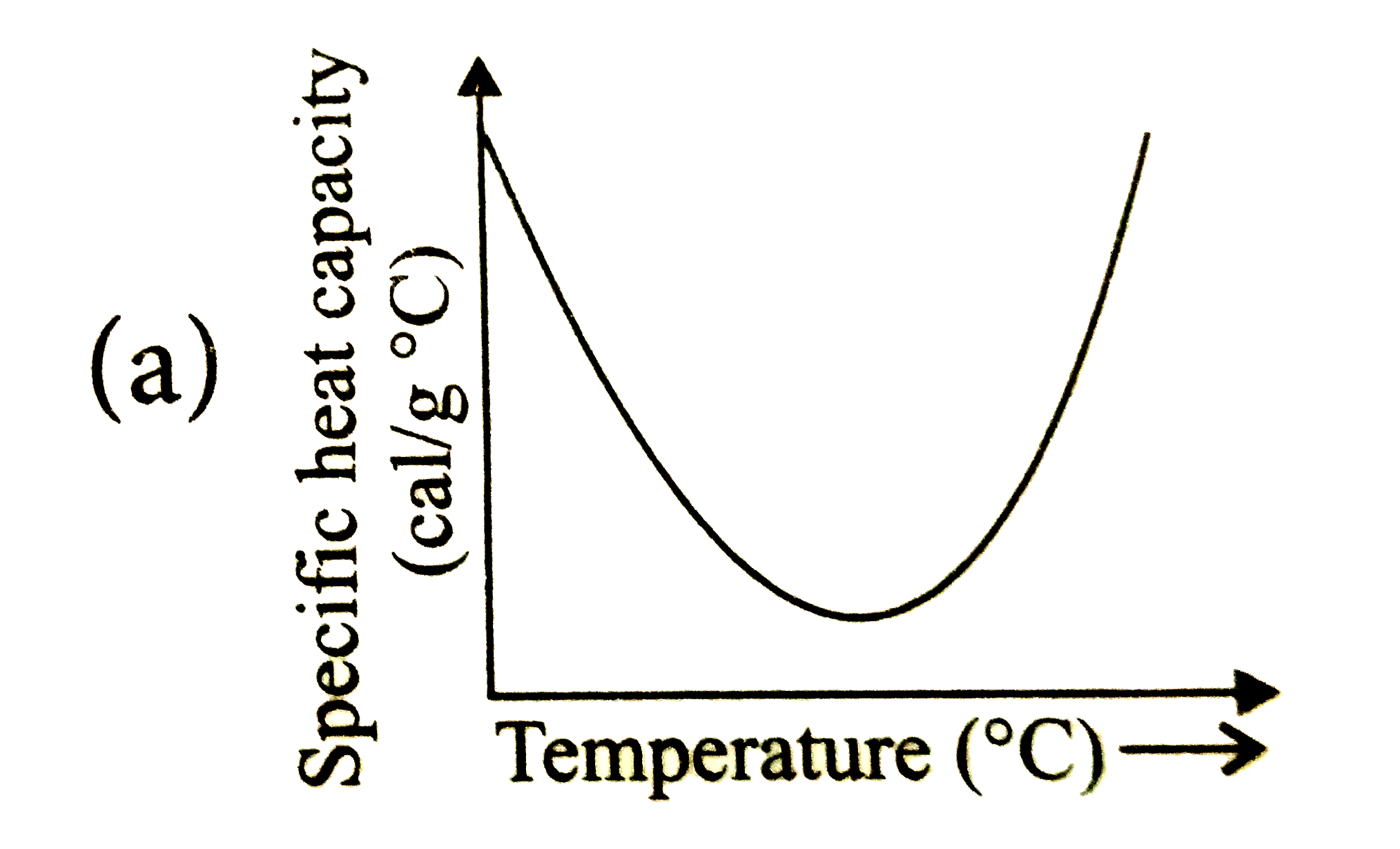 B
B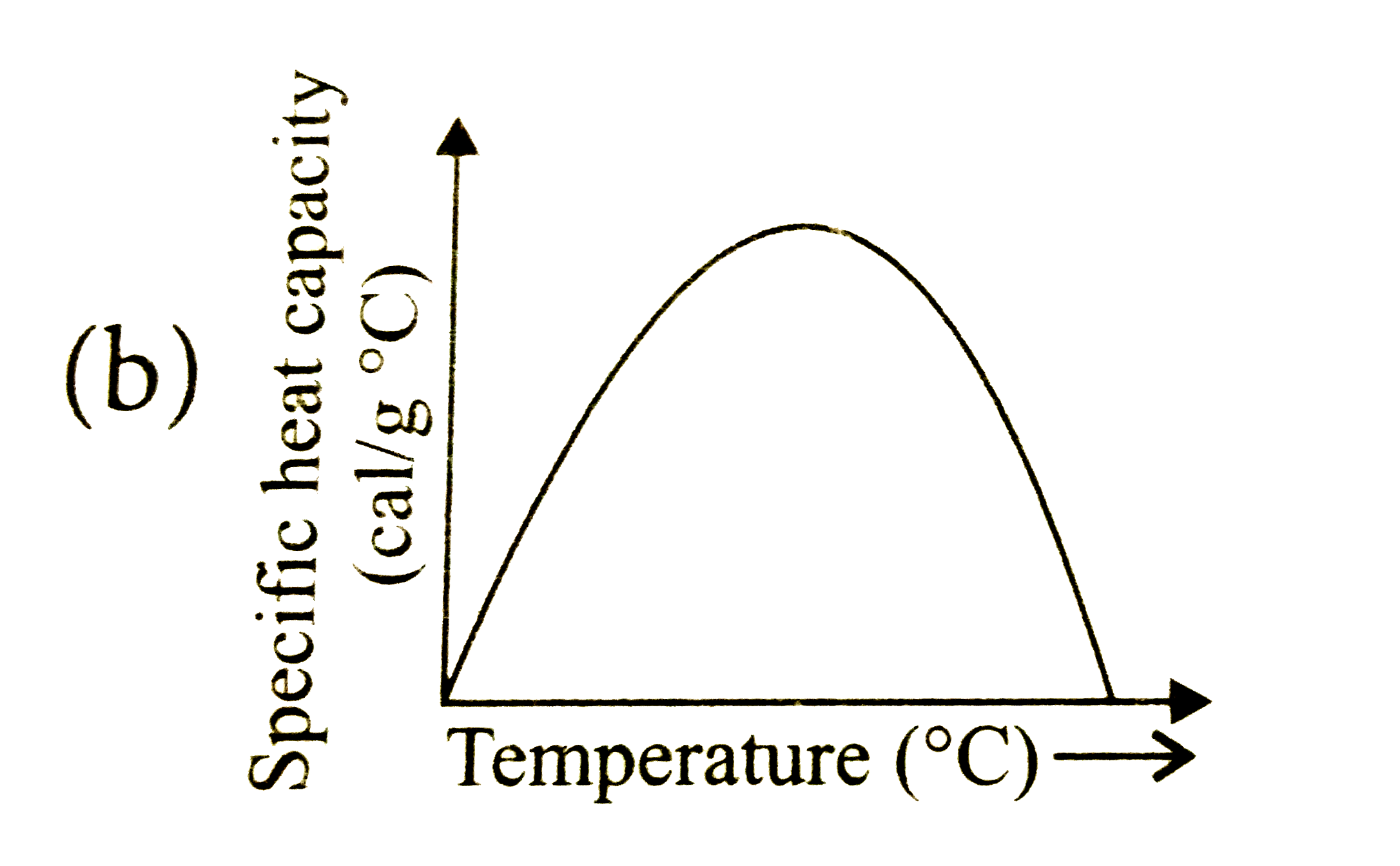 C
C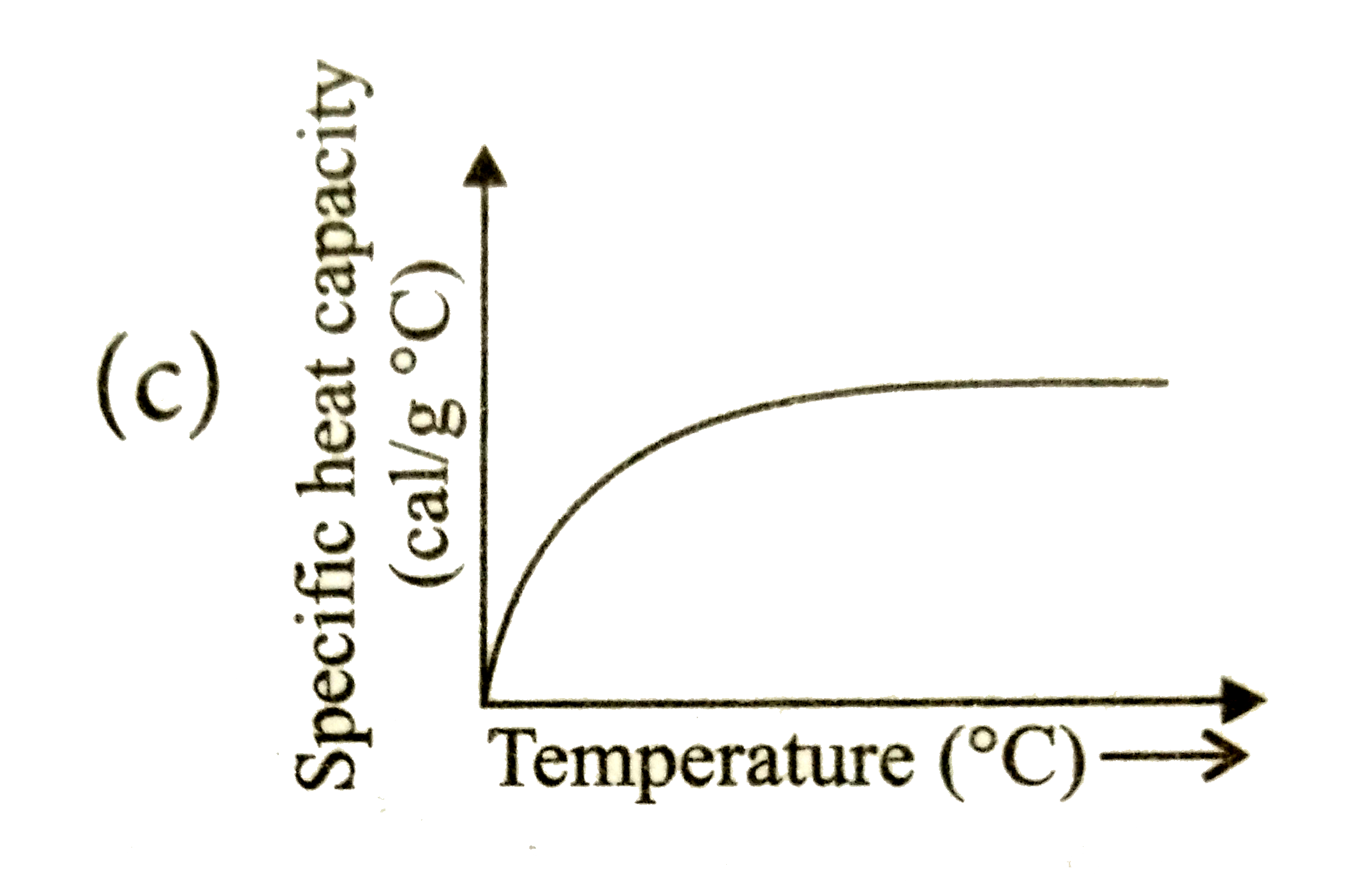 D
D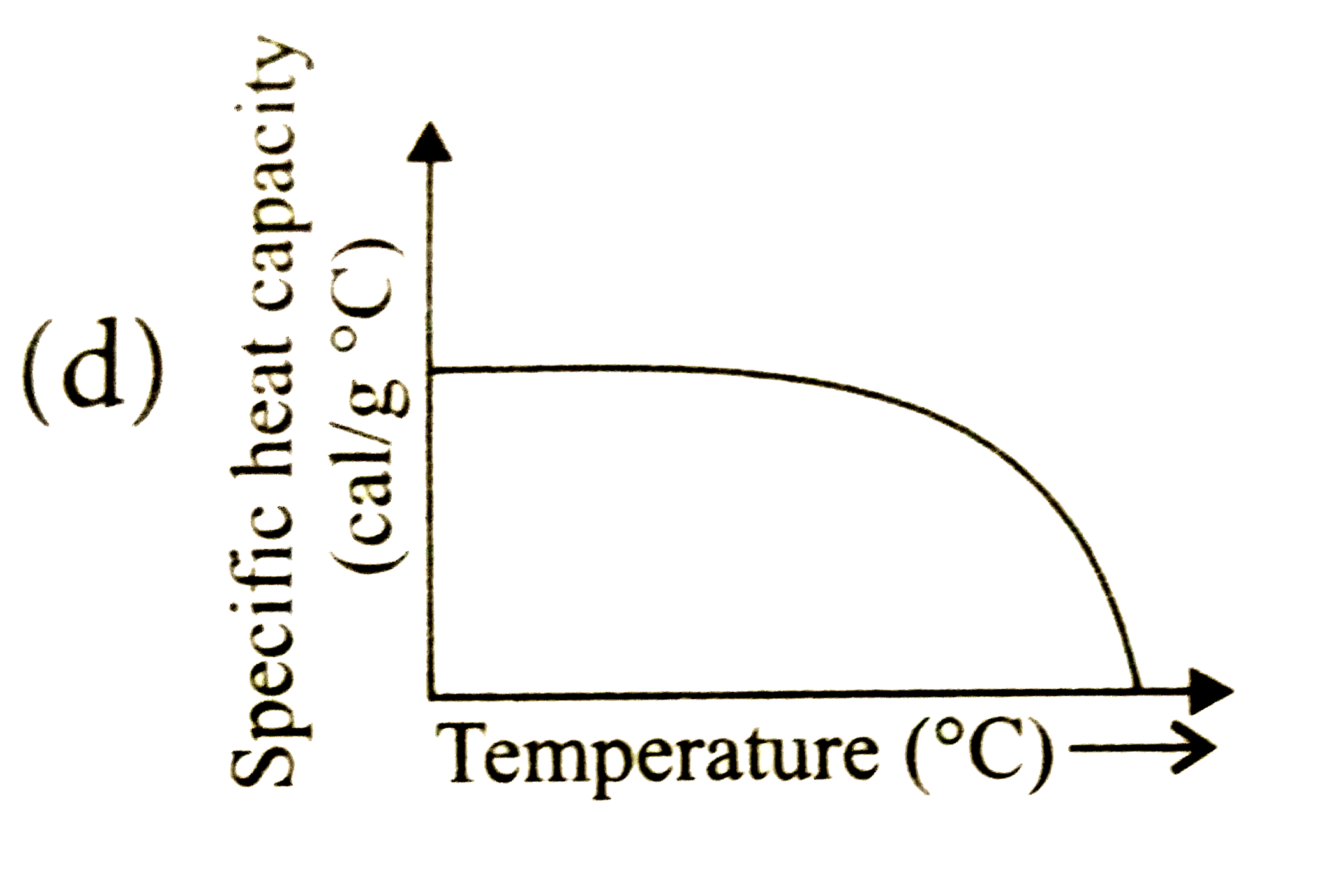
Which of the following forces pushes water into the xylem as osmosis moves water into the root ?
(a) Water stress
(b) Atmospheric pressure
(c) Root pressure
(d) TranspirationAWater stressBAtmospheric pressureCRoot pressureDTranspiration
A substance has its melting point above room temperature under one atmosphere pressure. Predict its nature.
View SolutionA mass m1 of a substance of specific heat capacity c1 at temperature t1 is mixed with a mass m2 of other substance of specific heat capacity c2 at a lower temperature t2. Deduce the expression for the temperature t of the mixture. State the assumption made, if any.
View SolutionA glass bulb is connected to an open-limb manometer. The level of mercury on both limbs was same. The bulb was heated to 57∘C. If the room temperature and atmospheric pressure are 27∘C and 750 mmHg, the difference of levels in the two limbs now will be
View SolutionArrange the following substances in order of their increasing density :
(a) iron (b) cork (c) brass (d) water (e) mercury.
View Solution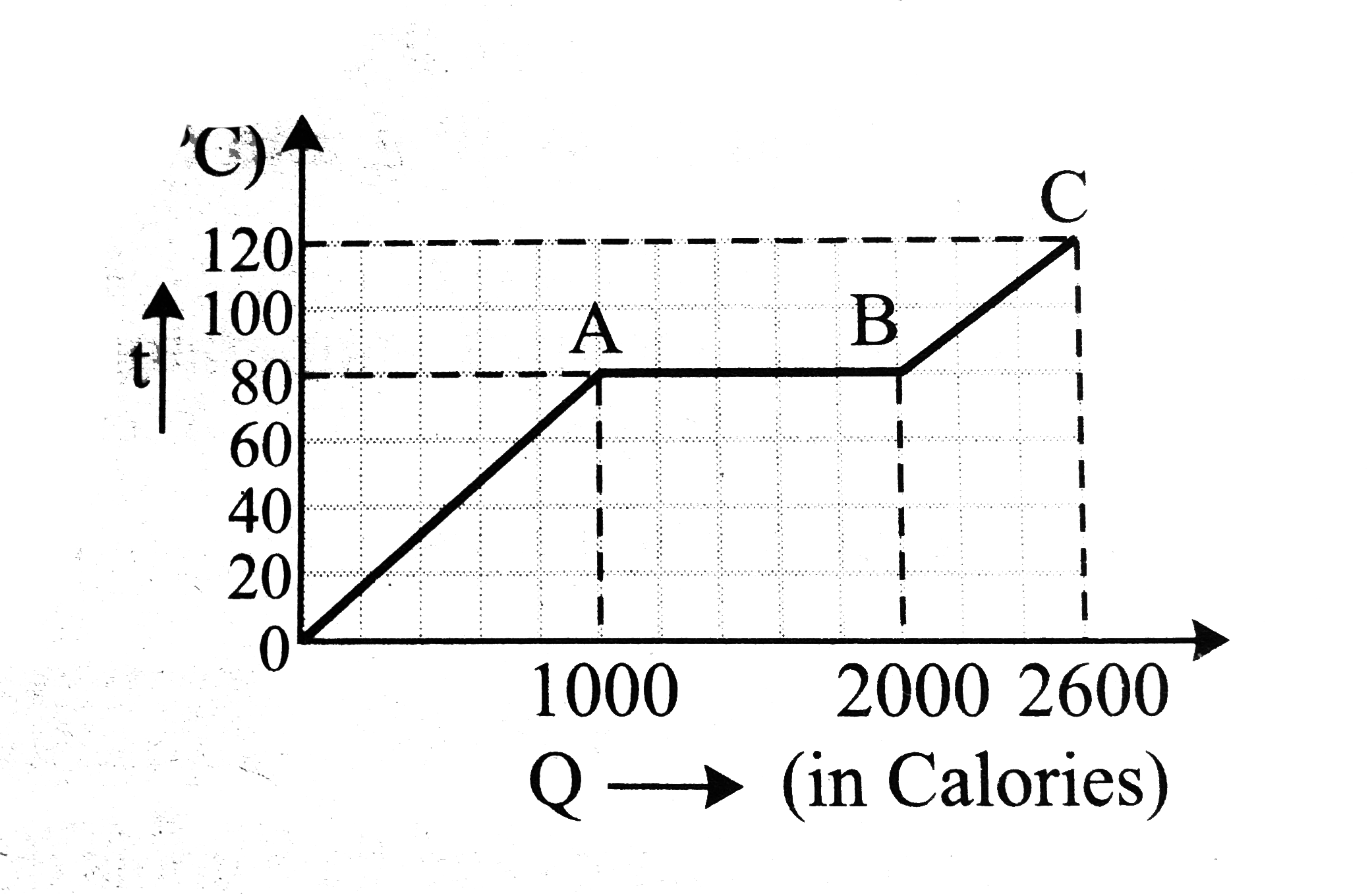
A substance is in the solid form at 0∘C. The amount of heat added to this substance and its temperature are plotted in the following graph. If the relative specific heat capacity of the solid substance is 0.5, find from the graph (i) the mass of the substance, (ii) the specific latent heat of the melting process and (ii) the specific heat of the substance in the liquid state.
Specific heat capacity of water =1000cal/kg/K
View SolutionA small quantity mass m, of water at a temperature θ(in ∘C) is poured on to a larger mass M of ice which is at its melting point. If c is the specific heat capacity of water and L the specific heat capacity of water and L the specific latent heat of fusion of ice, then the mass of ice melted is give by
View Solution

